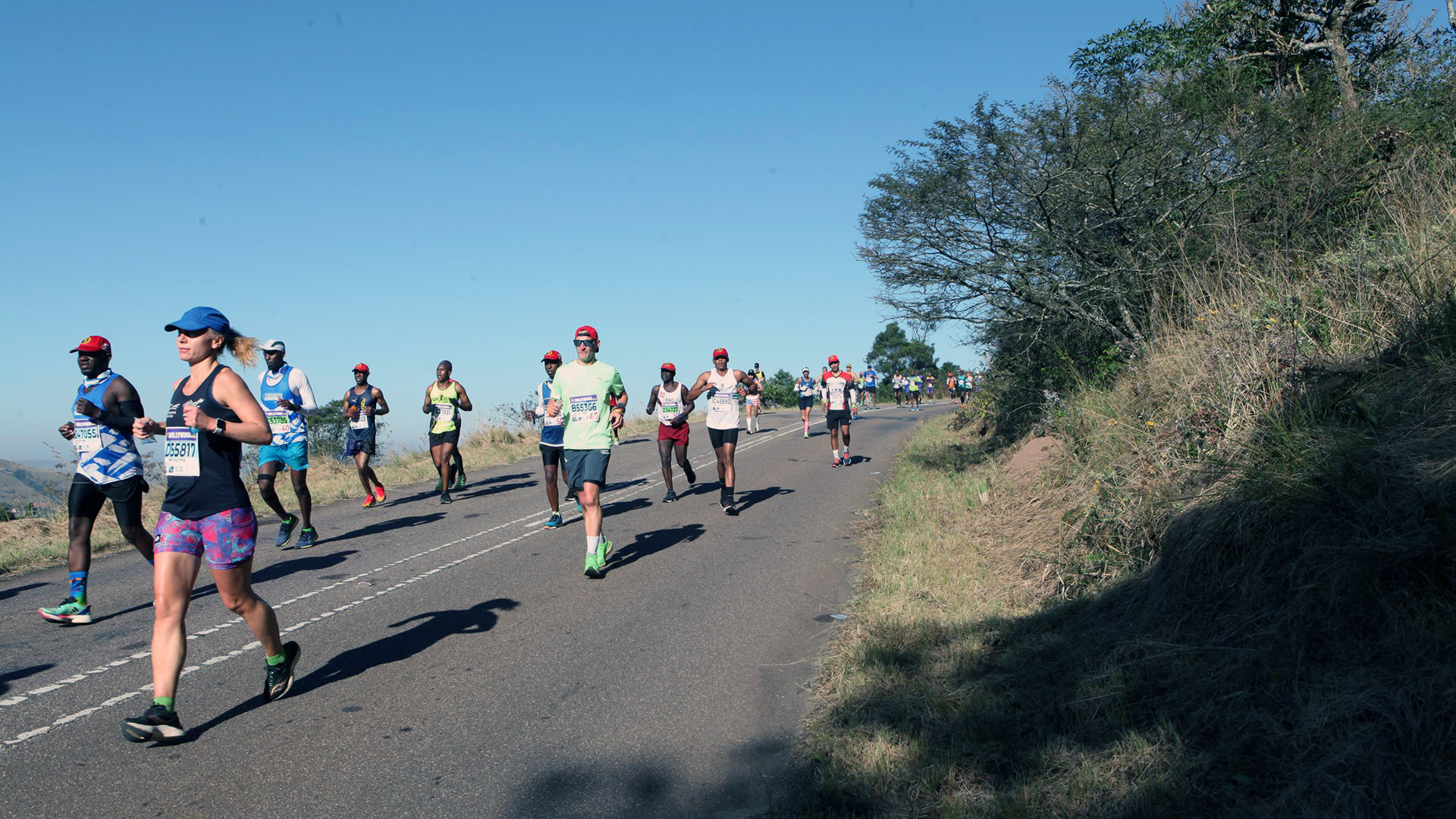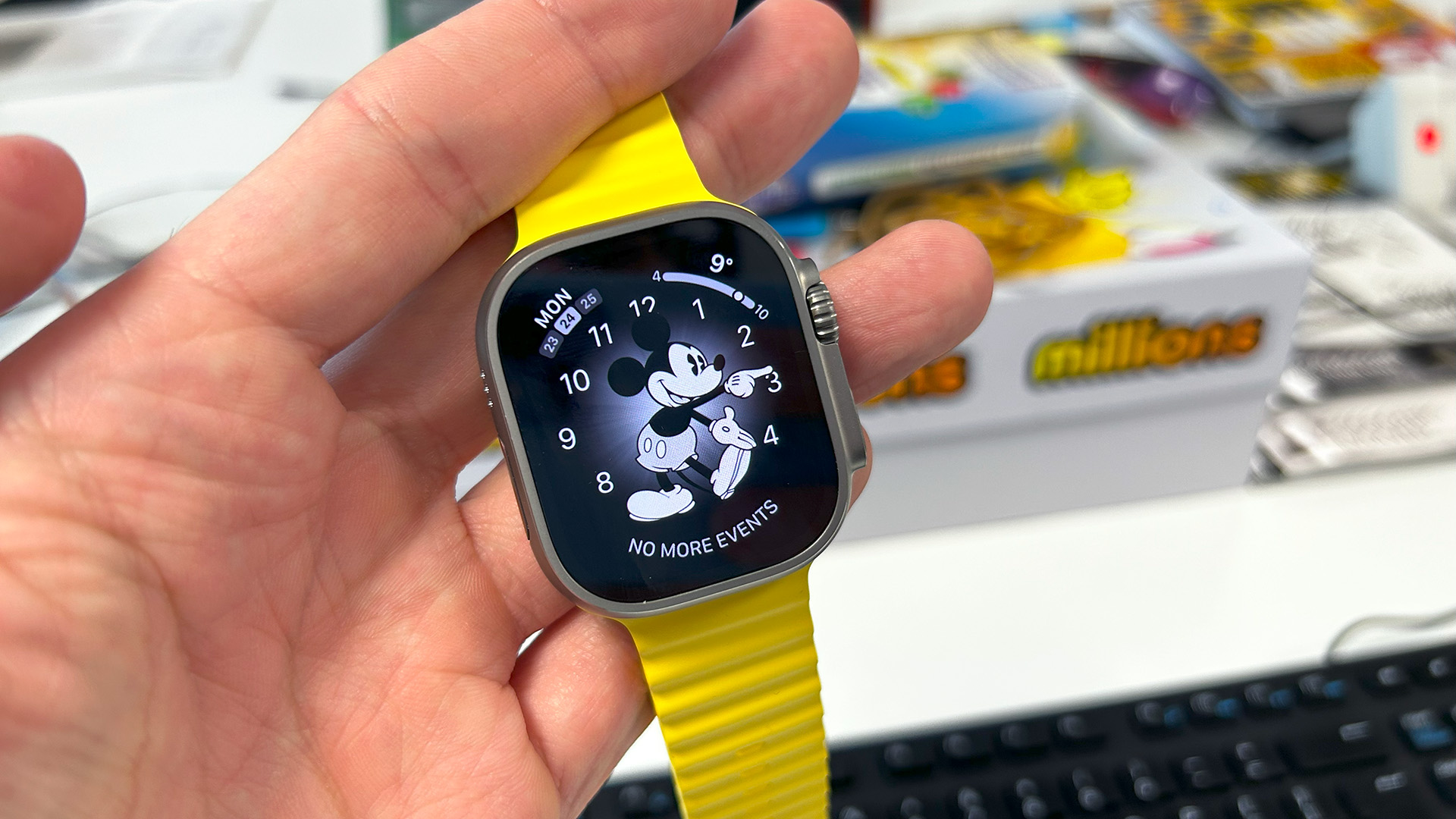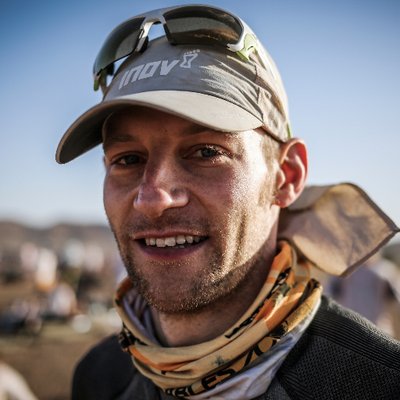I took the Apple Watch Ultra to run the world's oldest ultramarathon
Apple Watch Ultra vs Comrades Ultramarathon – the results are in


Regarding running watch credentials, the Apple Watch has taken huge strides forward since the first generation launched in 2015, almost a decade ago. It now offers some of the most reliable GPS, solid optical heart rate tracking, a much more capable native running app and plenty of third-party apps to beef up its running performance.
But despite improvements, there’s always been one thing holding it back – battery life. The Apple Watch Ultra hoped to change that, aiming to be the best Apple Watch yet. With 12 hours of GPS tracking power, the Apple Watch Ultra packs the biggest run-time battery life of any Apple wearable to date. It’s also the most rugged outdoor-proof Apple Watch yet.
When it launched, Apple showed runners tackling wild adventures, including runs in arid conditions much like the multi-day desert race, the Marathon des Sables. But is Apple’s premium smartwatch really equipped to conquer the ultra distance? Does that 12-hour battery life live up to the billing in the real world?
I headed to South Africa with Marathon Tours and Travel (retailer link) and strapped it on for the world’s oldest and most iconic ultras, the Comrades Marathon (also retailer link), to find out.
Why the Apple Watch Ultra?
Before we get into the race performance, let’s take a quick whistle stop tour of what makes the Apple Watch Ultra more long-haul, ultra run friendly than its predecessors and stablemates like the Apple Watch Series 8.

Big battery life
The Apple Watch Ultra lasts longer. Exactly how long depends on how you are using it. But one of the big upgrades is significantly more GPS runtime.
When it comes to runtime, the Apple Watch Ultra claims to last for 12 hours in regular GPS mode, which compares to the Apple Watch Series 8 which offers just six hours of GPS tracking. The Ultra also offers a low-power mode that’ll last up to 60 hours by reducing the number of heartbeat detections and GPS readings it collects to extend its life.
Get all the latest news, reviews, deals and buying guides on gorgeous tech, home and active products from the T3 experts
With general use, you get around 36 hours, or a day and a half. If you’re using LTE cellular signal from the watch (rather than just your phone’s data), you will get around 18 hours. That’s double the Apple Watch Series 8 for non-cellular use. And, of course, you can extend that with various power-saving tricks.
Rugged build
The Apple Watch Ultra looks like the Apple Series 8’s muscled-up sibling. With a chunkier 49 x 44 x 14.4mm casing and a bigger display, it’s also 4mm taller, 6mm wider and also 3.7mm deeper than the Series 8.
It’s built tougher, too. There’s a hard titanium bezel to protect the screen from knocks, and the casing has a MIL-STD 810H military testing standard certification. The watch is waterproof to 100m, while the Series 8 is protected to 50m only.
The controls are also designed to be easier to use on the move. There’s a more rugged digital crown and a more pronounced second button, so it’s easier to handle, even with gloves on. The Apple Watch Ultra has a dedicated action button for things like launching straight into a workout.

Mapping and navigation
There’s an upgrade to the Apple Watch Ultra GPS system, too, with a precision dual-frequency system for more accurate positioning. New navigation skills also include a new compass feature with backtrack options. And if you get into any scrapes, there’s an 86-decibel siren, an Apple’s array of emergency features like crash and fall detection, plus emergency SOS.
The Ultra Run Test
That’s all good on paper, but what about when the gun goes and you’re racing in the real world?
Well, despite that bigger battery life, if you were running a multi-day ultra like the Marathon des Sables, you’d still need a way to charge your Apple Watch Ultra from day to day. For events like this, the longer-lasting COROS Vertix 2, Garmin Fenix 7, or Garmin Enduro 2 can go for weeks without charging and are much better equipped.
However, for single-day races like the marathon, 50km, 100km and the 55-mile / 87km Comrades Marathon, the Apple Watch Ultra’s 12-hour GPS battery life means it’s now potentially an interesting choice.
To find out just how interesting, we conducted a simple test. I ran the Comrades Marathon putting the Apple Watch Ultra in full GPS mode up against two big endurance beasts, the Garmin Fenix 7 Pro and the Garmin Enduro 2 (both in normal GPS mode).
The aim: to see if the Apple Watch Ultra could last the distance while comparing the performance of the GPS, heart rate and a few other features along the way.

Staying power
The Comrades has a strict 12-hour cut off, so it’s the perfect event to test that 12-hour GPS battery life. It’s also a point-to-point race that starts at 5am. So if you’re staying at the finish line (a smart decision) you have to be up early to trek to the start. That meant I took all three watches off charge at 2am.
I was pleasantly surprised to see that after 3 hours with minimal use pre-race, the Apple Watch Ultra was at a healthy 95%. This is a watch that’ll happily soak up a long pre-race build up without leeching too much juice.
By comparison the Garmin Fenix 7 Pro was down to just 97% % and the Enduro 2 was untouched on 100%.
For the race, I just used my Ultra as I would normally. So No power-saving jiggery pokery and minimal usage beyond GPS and heart rate tracking.
When I crossed the Comrades finish line after 8 hours 48 minutes, the Apple Watch Ultra battery was down to 35%. That’s 60% battery used during the 9 hours of running, burning an average of 6.5% every hour. That’s a strong performance.
Based on that performance, you could happily get 14 hours GPS tracking from the Apple Watch Ultra provided you’re not using music or making lots of calls.
If I’d needed another 3 hours to complete the race within the 12 hour cut off,
the Apple Watch Ultra would have lasted the distance. And still have just about enough juice to call the family after, hail an Uber or pay for a celebratory beer.
For some context, you’d have enough staying power to run 100km ultra at 8.5 mins per km or 13.5 min per mile. No previous Apple Watch or other smartwatch would cover that kind of race time/distance.
Classic running watches are a totally different story. By comparison, the Garmin Enduro 2 burned just 14% from taking it off charge to the finish line. While the new Fenix 7 Pro burned 27%.
So the Apple Watch Ultra battery life isn’t yet anywear near those two endurance beasts.

GPS performance
I set up all three test watches to use the more accurate dual-frequency multi-band GPS tracking smarts. And the results were impressively consistent. The Apple Watch Ultra’s overall distance across 55 miles of South African countryside was slightly higher than the Enduro 2 and the Fenix 7 Pro, but we’re talking a 0.4% per cent difference, insignificant over such a long distance.
When you look at the GPS traces from all three as well, they all follow similar lines. There’s no significant deviation through buildings or meanders off-piste to cause alarm. They all wandered slightly at times but not enough to affect the overall accuracy.
While the race distance tracking was reliable, the real-time pacing did what real-time pacing does. All three took turns to flicker around a bit, and they rarely all agreed. So I wouldn’t say the Apple Watch Ultra was any better or worse than the Garmins.
| Header Cell - Column 0 | Apple Watch Ultra | Garmin Enduro 2 | Garmin Fenix 7 Pro |
|---|---|---|---|
| Distance (miles) | 55.31 | 55.14 | 55.10 |
| Avg. pace (min/mile) | 9:36 | 9:38 | 9:38 |
| Avg. HR | 141 | 141 | 141 |
| Max HR | 169 | 171 | 165 |
| Ascent (feet) | 3,776 | 3,806 | 3,813 |
| Descent (feet) | Not measured | 5,914 | 5,932 |
Heart rate performance
The Comrades is a hot and very, very hilly race where you might expect some heart rate trackers to struggle.
But I was amazed to find the watches’ average heart rate readings all in agreement at the end of the race. That rarely happens. They also matched a £450 Fourth Frontier X2 chest strap closely. That gold standard strap put my average BPM at 140 compared to the 141BPM on all the watches.
There was more disagreement with the max heart rate. The Enduro 2 clocked the highest at 171BPM, the Fenix 7 Pro the lowest at 165 BPM and the Apple Watch Ultra sat somewhere in the middle at 169 BPM. The chest strap peaked at 164BPM. But the higher reads were momentary peaks and for large parts of the race, the heart rate sensors were closely matched.
Screen if you want to go faster
The Apple Watch’s bright, clear, crisp screen has always been one of main USPs and the Ultra’s larger display really makes it a doddle to see your essential stats on the move.
The customisation now also lets you highlight the most important metrics for your race though the Apple Watch Ultra still doesn’t match the Garmin Enduro 2 of Fenix 7 in terms of the choice of metrics you can display or the level of customisation you can apply. But if you’re after a couple of core, simple stats to guide you, the Apple Watch Ultra handles that well.

Tune up the heat
I didn’t listen to music during this run. It’s actually not allowed at the Comrades. Listening to tunes along the way certainly would’ve impacted the battery life performance of the Apple Watch Ultra. More so than the two Garmin watches. However, in races where you’re allowed to use music, the experience is much better on the Apple Watch. The interface is cleaner and easier to navigate, and you’ve got more options when it comes to the provider.
Motivational messaging
I tend to switch off from the outside world during races and I know running purists will shuffle uncomfortable in their short shorts when I say this, but being able to make quick calls from the wrist makes the Apple Watch Ultra a powerful potential motivator. When the going gets tough, a quick check in with the family or a friendly voice, can give you a boost. The simplicity of doing that on the move is a win with the Ultra.
Lord of the rings
One final area where the Apple Watch Ultra definitely beats the Garmin watches for pure and simple satisfaction is the Apple Fitness rings. There’s nothing more satisfying than checking those and seeing them spin round and round and round after you’ve just run an ultra!
The ultra-friendly running smartwatch we’ve been waiting for?
When I saw Apple launch the Apple Watch Ultra with photos of desert runners, and that Ultra tag, I was the first to question its long-haul endurance credentials. I still think there’s a way to go before this watch is a genuine conquer-them-all ultra running tool. That battery life still isn’t there for multi-day or 24-hour races. The native navigation remains somewhat limited.
But my Comrades test convinced me that for races up to 14 or 15 hours, on a marked course, Apple finally has a watch you can rely on to go the distance, track with good accuracy and bring a whole load of extra smarts that you won’t find on your Garmin, COROS or Polar.

Kieran is a freelance writer and editor working in the space where health, fitness, sports and technology collide. He covers everything from virtual reality and smart scales to the latest wearable health trackers. Kieran is also a borderline-obsessed runner and is passionate about using the latest technology to hack his health in search of marginal gains.